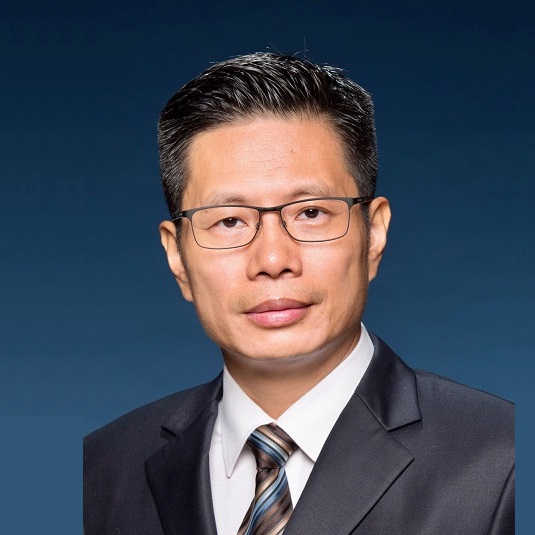Associate Professor,
Teaching and Research Division
School of Chinese Medicine,
Hong Kong Baptist University

Presenter/Author:
ZHANG Shi Ping
Other Author:
N/A
Author Affiliation:
School of Chinese Medicine, Hong Kong Baptist University
Keywords:
Cybernetics, Traditional Chinese medicine, tele-healthcare, TCM pattern differentiation, disease diagnosis
Abstract:
Cybernetics is the science of communications and automatic control systems in both machines and living things. It is also the science of bridging between living things and machines [Wiener 1954]. When applying the cybernetic framework to medical practice, the process of which can be described as assessment of changes in body conditions, followed by correction of the changes using appropriate interventions. In this process, the corrective actions are guided by measurements of changes in the body condition, showing the characteristics of negative feedback control. When the practice of traditional Chinese medicine (TCM) is viewed from the cybernetic perspective, the process starts with the Assessment Step by judging changes in certain patterns, which is called TCM pattern differentiation (Bianzheng, 辨证), followed by the Correction Step using corresponding treatments (Shizhi施治), with the aim to reverting the body to its normal or desirable state. However, it is known that the process of Treatment Guided by Pattern Differentiation (辨证施治) has many limitations in practice, including difficulties in accurately determining a pattern and unresponsiveness of the patient to treatment even with correct pattern differentiation.
To overcome these limitations, practices in TCM hospitals have embraced certain Western medical measurements in the Assessment Step. The most common measurement used is the Western medical diagnose. When both TCM pattern and Western medical diagnosis are considered together (to guide the corrective actions), it is called Pattern Differentiation in Conjunction with Disease Diagnosis (辨证与辨病结合)Most CM practitioners have adopted this approach, either consciously or subconsciously, either in CM hospitals or in clinics.
In this presentation, I will illustrate how telemedicine revolutionizes the Assessment Step, providing more diverse and relevant measurements and timely feedbacks. I will discuss the roles of big data analytics and A.I. in both the Assessment Step and the Correction Step, and how these technologies can help human to practice integrative healthcare for anti-pandemic and in CM hospital settings. I will put forward the proposition that cybernetics, which affords the theoretical framework for bridging human and computers, provides a new model for integration of TCM with Western medicine, which I call cybernectically integrative healthcare (CIH). Furthermore, it is suggested that the new CM hospital in Hong Kong shall implement CIH, and include a strong component of tele-healthcare in its overall design scheme.
Reference:
Wiener N. The human use of human beings. New York. 1954.
Funding Source:
This study is partially supported by a grant from Chinese Medicine Development Fund of Hong Kong (22B2/006A)
Conflict of Interests:
The author reports no conflicts of interest related to this study.
Presenter/Author:
ZHANG Shi Ping
Other Author:
WANG Zhi Chun
Author Affiliation:
School of Chinese Medicine, Hong Kong Baptist University
Keywords:
Tongue diagnosis, quantitative diagnosis, tele-healthcare, TCM pattern, body constitution
Abstract:
Symptom inquiry and tongue diagnosis are important procedures of TCM diagnosis. During the COVID-pandemic, more and more TCM practitioners perform these procedures using smartphones. However, there is no generally accepted method for obtaining tongue image with smartphone. Furthermore, symptom inquiry is time-consuming in tele-consultation. In this workshop, a standardized photographic protocol will be demonstrated and the characteristics of tongue images obtained via this protocol will be discussed [Wang at el., 2020]. As well, tele-consulting experiences on the application of quantitative questionnaires together with the tongue imaging protocol using instant messaging systems will be considered, giving insights into the advantages and limitations of the tele-healthcare methods. At the end of the workshop, TCM product suppliers from Australia (Dr Max MA) and Netherland (Dr. DONG Zhi Lin) will join in to discuss about supply chain issues in different countries.
Reference:
Wang ZC, Zhang SP, Yuen PC, Chan KW, Chan YY, Cheung CH, Chow CH, Chua KK, Hu J, Hu Z, Lao B. Intra-rater and inter-rater reliability of tongue coating diagnosis in traditional chinese medicine using smartphones: Quasi-delphi study. JMIR mHealth and uHealth. 2020 Jul 9;8(7):e16018.
Funding Source:
This study is partially supported by a grant from Chinese Medicine Development Fund of Hong Kong (22B2/006A)
Conflict of Interests:
The author reports no conflicts of interest related to this study.
Dr. Zhang received his bachelor degree in Guangzhou University of Traditional Chinese Medicine in 1987. He then went to Australia and studied at the University of Sydney to obtain his PhD degree in neuroscience in 1993. In 1998, he moved to the Hong Kong Baptist University and took part in establishing the first Chinese Medicine undergraduate program in Hong Kong Baptist University. His current research interests include clinical trial study of acupuncture efficacy, TCM cybernetics and telehealth. He has published over 100 scientific papers, many in SCI journals. He is the co-editor of a comprehensive clinical acupuncture manual 針灸臨床精要 (Essential of Clinical Acupuncture). He holds two invention patents in tongue diagnosis. He is currently the principle investigator for three research projects with funding over 4 million HKD. These projects are: (i) funded by the ITC and the Ministry of Science and Technology (Research and Development of Warm Palace Analgesic Point Stickers Based on the Modern Technology of Traditional Chinese Medicine); (ii) funded by the Health and Medical Research Fund (Diabetes screening and monitoring using tongue images and self-reported symptoms: a machine learning approach); and (iii) funded by the Chinese Medicine Development Fund (Traditional Chinese medicine in the treatment of novel coronavirus infection: a retrospective study). In June 2022, he applied for and received funding from the HKBU research committee’s International Activities Programme to host the 1st International Conference on Traditional Chinese Medicine Tele-healthcare.